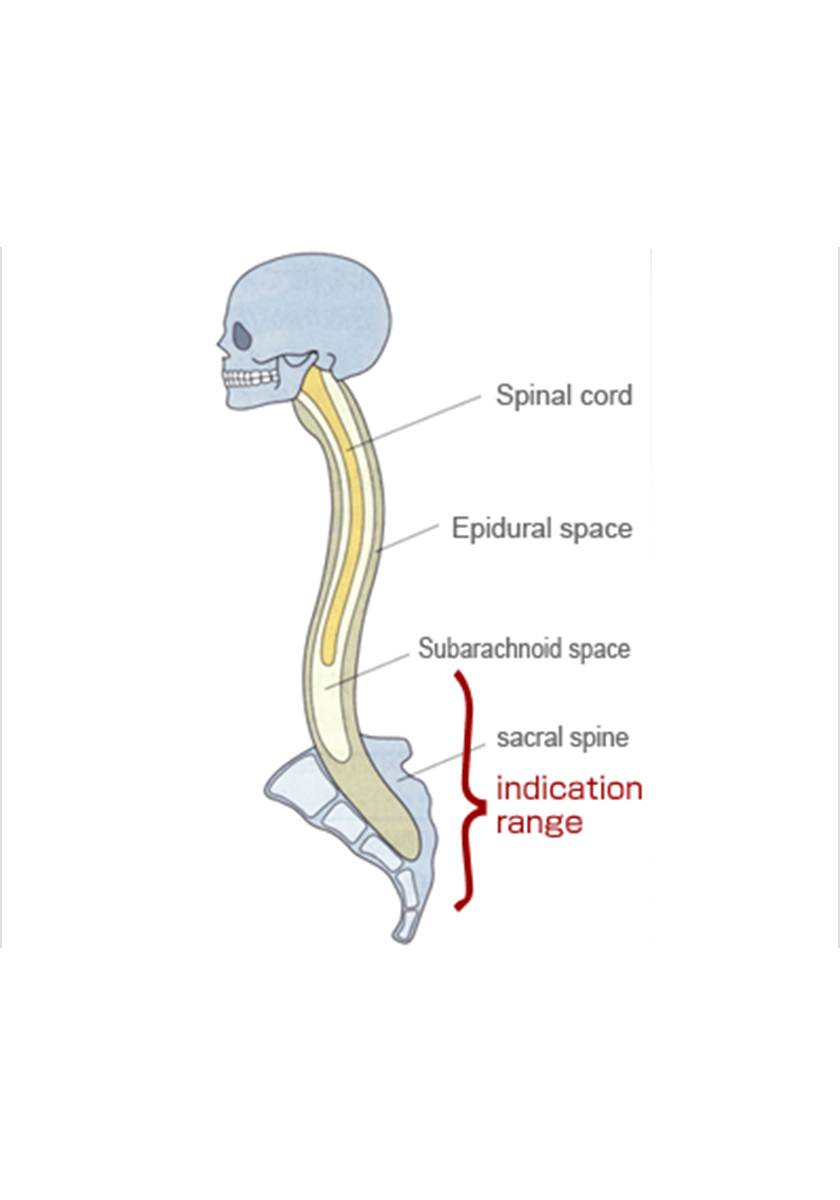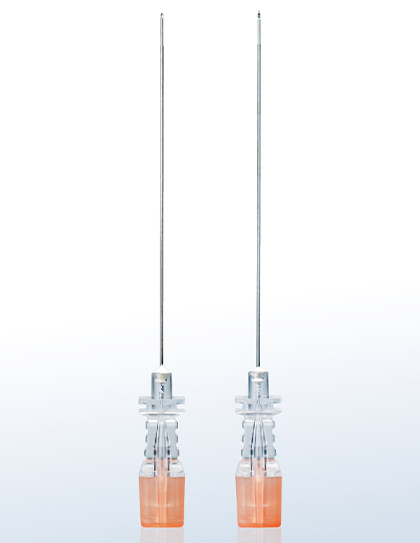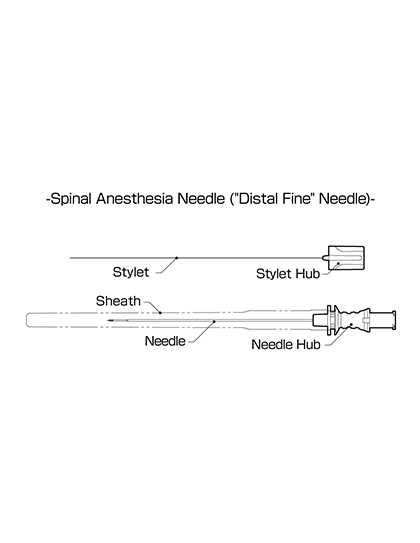Disposable Spinal Anesthesia Needle ("Distal Fine" Needle)
Japan's first advanced Spinal Needle for minimally invasive and safe puncture
Only the tip of the needle has a small diameter, enabling minimally invasive puncture with minimal damage to the dura mater. The diameter difference at the tip of the needle stabilizes needle puncture and allows puncture without the use of a guide needle, even for pencil point needles. In addition, the fine-diameter part of this spinal needle has superior recall-back performance compared to normal spinal needles of the same diameter.
| Product Name | Disposable Spinal Anesthesia Needle ("Distal Fine" Needle) |
|---|---|
| Needle point Type | K-3 lancet point / Pencil point |
| Package & Delivery unit | Individually packed and 25 pcs/box |
*Standard size : 70mm in length
- 25G
| Needle point | G: Gauge | Length | |
|---|---|---|---|
| Distal end | Shaft part | ||
| Pencil point | 25G | 23G | 70mm |
| K-3 lancet point | 25G | 23G | 70mm |
FEATURES
Processing to reduce the diameter
The incidence of PDPH (post-dural puncture headache) has been reported to be reduced with smaller diameter needles in spinal needles, but the needles are said to be less likely to advance straight during puncture due to not being as stiff. The “Distal Fine” (meaning thinner distal end) needle has a smaller diameter (2 gauge difference) from the tip of the needle to 7 mm, which reduces needle deflection and ensures stable puncture.

Rapid flush back of CSF and Crystal-clear hub
It is designed with a larger shaft part in contrast to a smaller distal end, which gives it excellent CSF recall back performance. In addition, our crystal-clear polycarbonate hub allows easy visualization of CSE flashback.

Enables puncture without the use of a guide needle
Compared to a standard spiral needle, with the same diameter at the narrow end, having a smaller tip only reduces needle deflection during puncture and thus allows for a more stable puncture. For pencil point, the specification (Distal end : 25G / Shaft part : 23G) x 70mm allows puncture without the use of a guide needle.
PERFORMANCES
Under preparation.Procedure

Spinal anesthesia is a technique that temporarily blocks spinal autonomic, sensory, and motor nerves by injection of an anesthetic agent into the cerebrospinal fluid of the subarachnoid space. The anesthesia is usually injected through the lumbar spine, below L2, to avoid risk of puncture to the spinal cord. Spinal anesthesia is safe and easy to perform, and it is widely used not only in the anesthesia department but also in the surgery, obstetric, and orthopedic departments. A benefit of this technique is that a small quantity of anesthetic agent can take effect almost immediately at the site where its effects are required. A drawback is that surgical time is limited by duration of action of the anesthetic agent and that the surgery is possible only in the affected site.
Typical indications for Spinal Anesthesia
- Appendectomy
- Caesarean section
- Treatment of the anal and perineal area
- Severe low back pain
- Lower extremity fracture
Pencil point

Unisis has improved the conventional Whitacre point. Our non-cutting conical-shaped design allows smoother puncture without cutting the dura. This enables quick closure of the puncture hole to minimize the CSF seepage, preventing PDPH incidents.
Our original trapezoidal side hole is registered under #2112670 of the Practical New Ideas of the Japan Patent Office. This shape let you securely feel the passage through the dura mater and also helps achieve very rapid CSF flush back.
K-3 lancet point

The needle point is Quincke point type. It has a moderate puncture feeling and sharpness, assuming also applications and situations where sharpness of the needle tip is required.
* Please ask us for more information on this product.
Back to products lineup page




